Open Electricity Dispatch — May 2025

Each month, we round up the most interesting shifts in the grid – new records, infrastructure updates, and other signals of change in Australia’s electricity system.
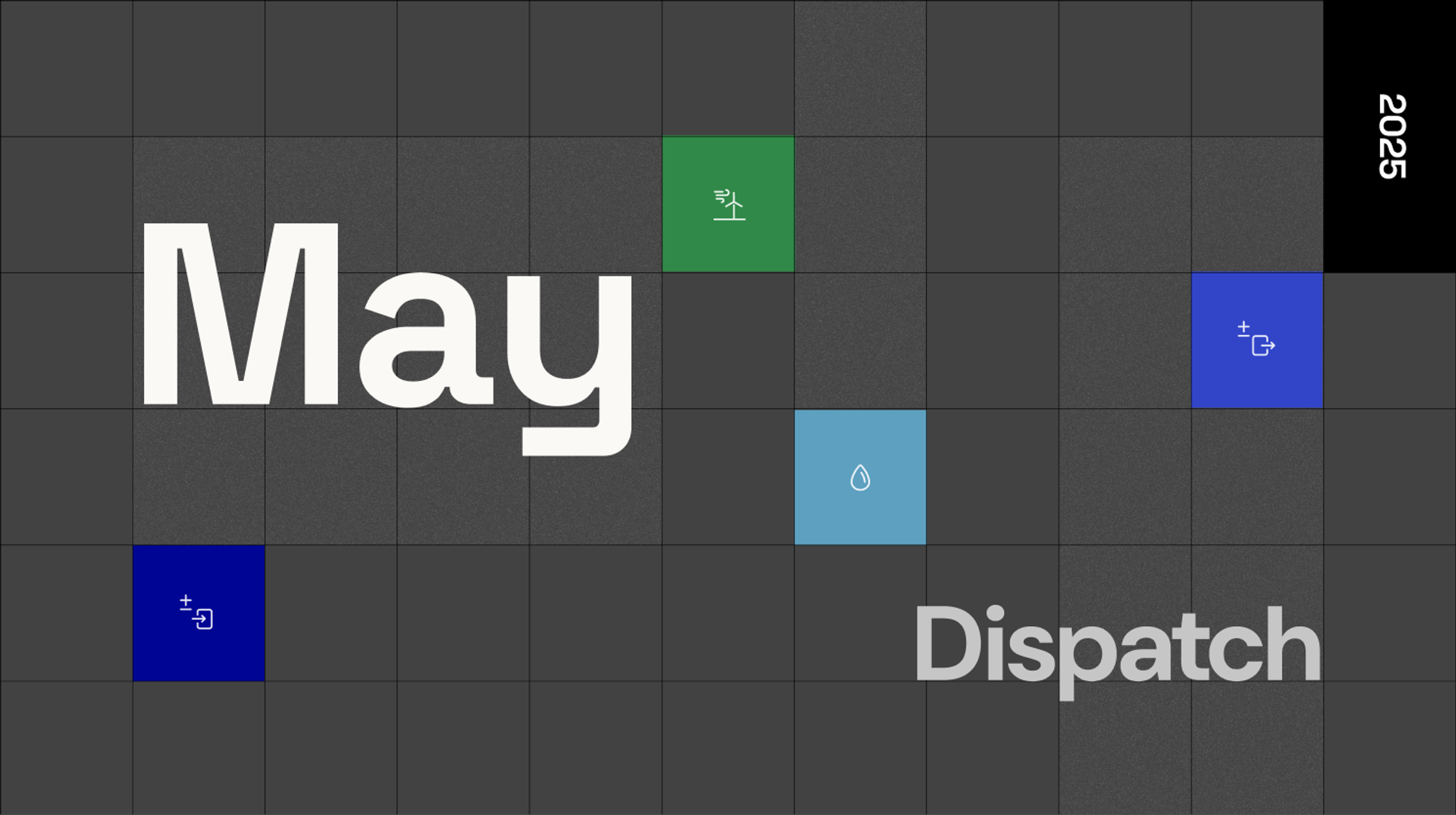
May typically sees total generation increase across all states from the April nadir, and stands at about the yearly NEM average. While solar generation falls, all other major sources – coal, gas, wind and hydro – step up to meet demand.
This year, wind generation has seen a particular increase. This is partly due to Queensland’s growing wind capacity, which put that state on track to break its monthly record, last set in May 2024.
Battery records continue to be frequent – unsurprising given the wave of projects currently commissioning – and a trend that will likely continue with many more under construction.
There were 49 records broken in May. View them all.
Here’s your monthly dispatch from Open Electricity:
Notable Records:
On May 5 at 5:30PM, wind generation reached 3993MW – just surpassing the previous record of 3,984MW set on March 16. That record was broken again, more decisively, on May 26 with 4,206 MW – a 3% increase.
After a subdued 2024 for wind, Victoria had not surpassed its July 2023 record (3,706MW) at any point last year. A number of new wind farms have since begun generating, including the ongoing commissioning of the Golden Plains East Wind Farm, which will be the largest wind farm in the state. Generation from its first two stages is already visible in the data, with May 24 showing generation near, and May 26 surpassing, the state average.

On May 9, NSW batteries discharged a total of 1,208MWh – an increase of 33% from the previous record (908MWh on January 30). While the Eraring battery has started generating since the previous record, this increase was primarily driven by the ongoing commissioning of the Waratah Super Battery.
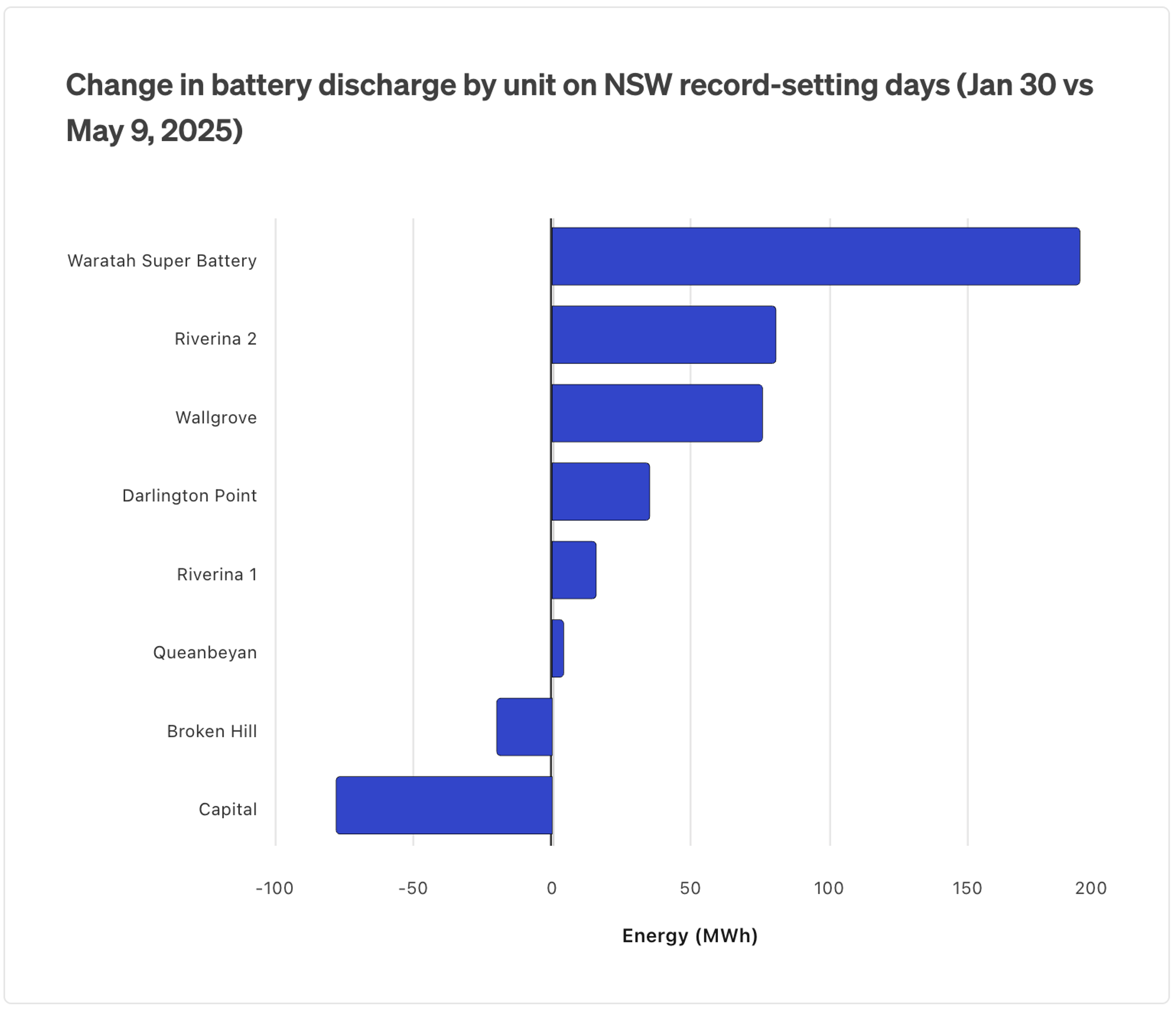
Waratah is now the largest battery in Australia by instantaneous output. Unlike typical market-facing batteries, the Warratah battery is supported through a “System Integrity Protection Scheme” (SIPS) agreement, which means that at different times of the day or year some of its capacity may be reserved for network support.
The Victorian Big Battery operates under a similar scheme from November to March each year, and we can see this reduces the total discharge across these months as it has to be able to respond when necessary, limiting its activity in the market. Batteries like these deliver value that isn’t fully captured by generation data alone.
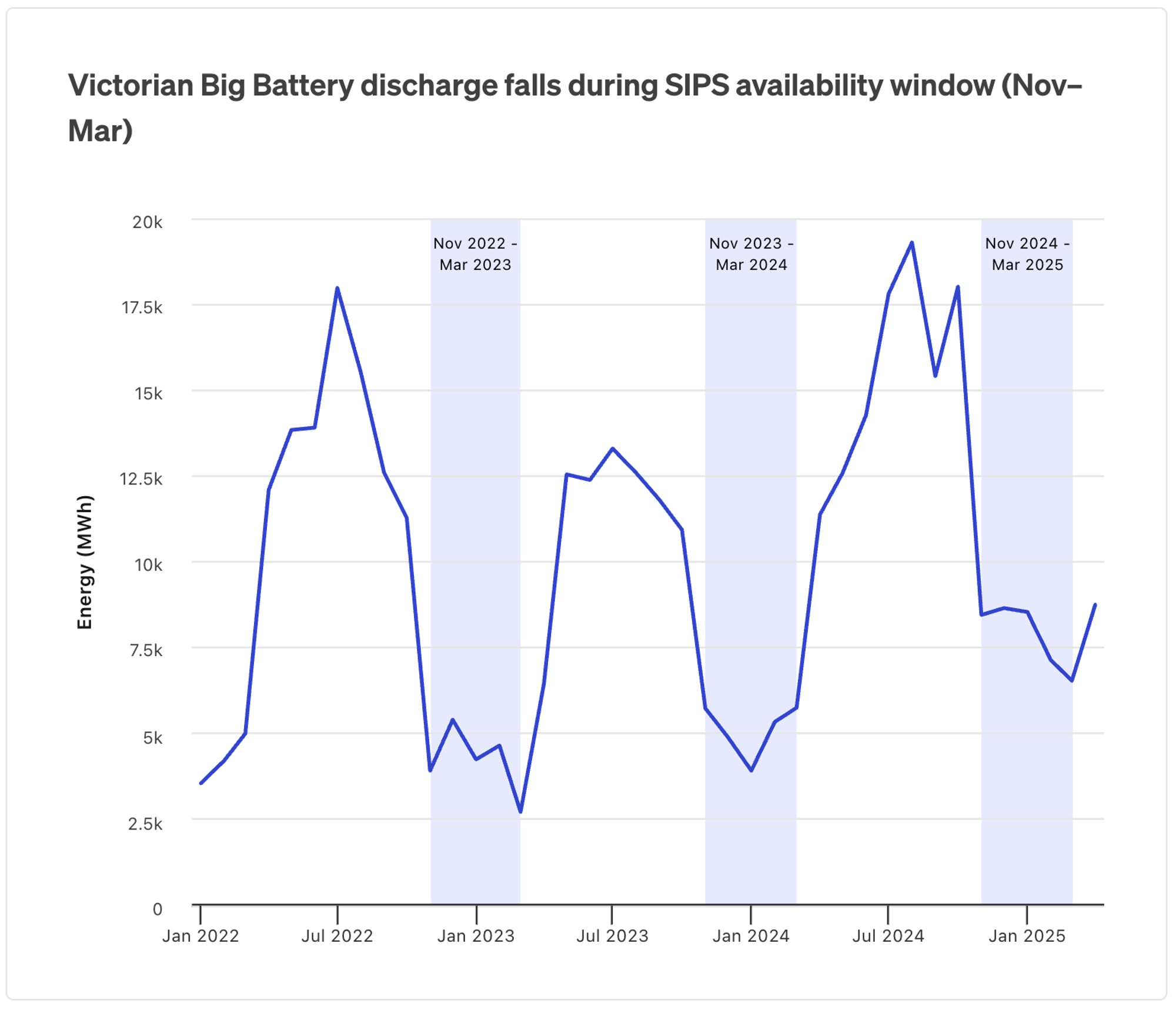
The NEM’s battery discharge record was broken on May 1, 2 and again on May 15 – marking the tenth time the record has fallen this year. On May 15, battery discharge peaked at 1,512MW, up 14% from the previous high of 1,319MW on April 12.
At the same moment, Victoria also set a new state record with 616MW discharged – representing about 9% of the state’s total generation at the time.
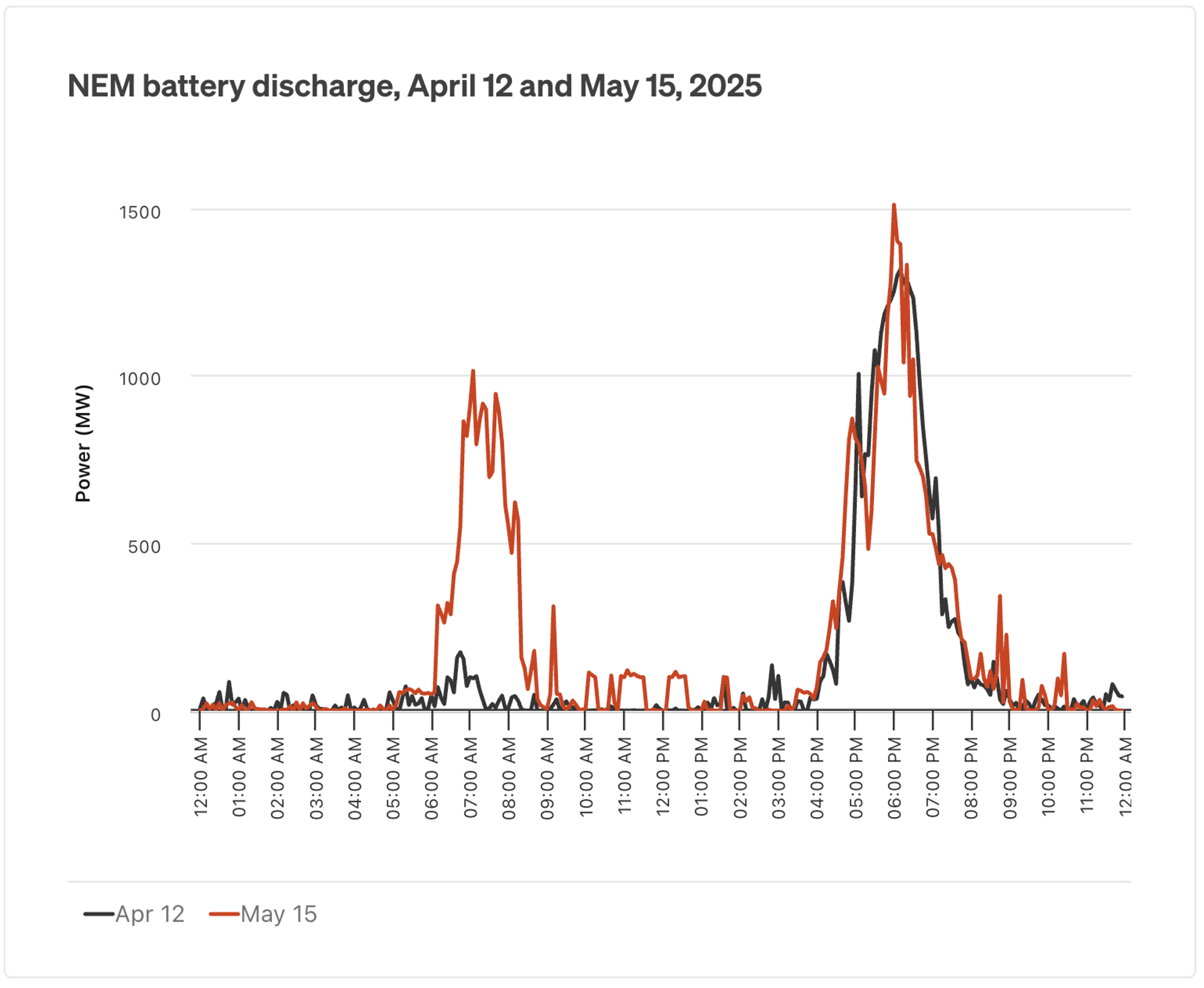
Notably, just five minutes earlier, NEM-wide battery discharge was below 1,281MW. Much of the surge came from Hazelwood BESS in Victoria, which ramped from near-zero to almost full output within that interval.
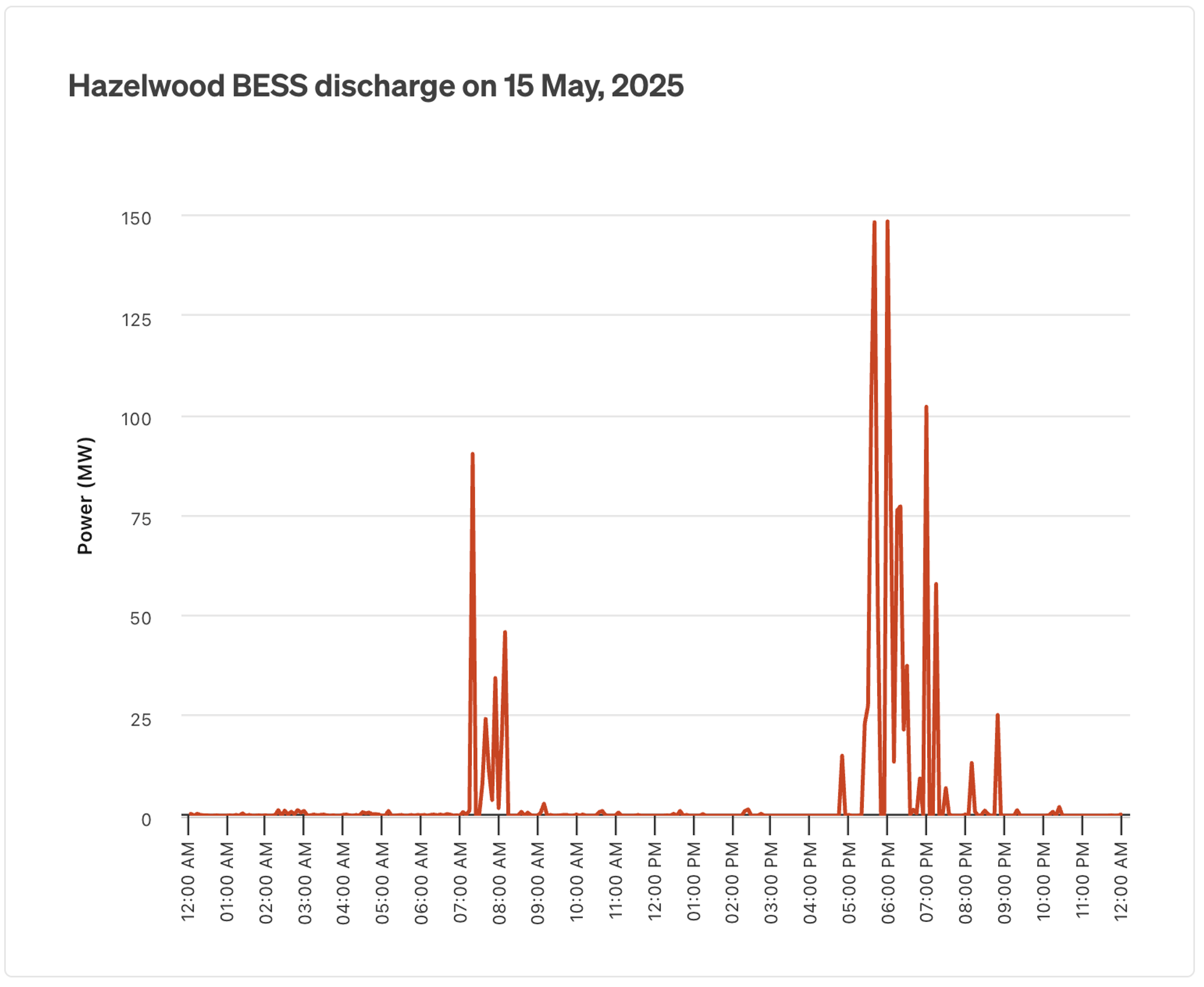
On May 26, after several days of strong wind generation, the NEM smashed the highest instantaneous wind record with 9,287MW at 9:40PM – an increase of over 10% from the previous record set on May 30, 2024.
Since that last record, eight units across six wind farms have begun generating – many of them large-scale projects that together contributed 1,231MW to the new total. While some were generating near full capacity, a notable exception was the still-commissioning Macintyre Wind Farm, which contributed just 271MW of its 923MW registered capacity. Once fully online – expected by November – Macintyre will be the largest wind farm in the country.

Facilities Update
South Australian batteries begin generating:
Two new grid-scale batteries began generating in South Australia this month:
- Mannum 2 (Epic Energy) - 100MW/200 MWh – commissioned May 13
- Templers (ZEN Energy) – 111 MW / 291 MWh – commissioned May 20
Templers is now the second-largest battery in the state by storage. Together, these two projects increased South Australia’s utility battery power capacity by 26%, and energy storage by 48%.
As of Q1 2025, South Australia had the highest share of battery discharge in the NEM, with batteries providing 1.4% of total generation.
Construction progresses at the Broadsound Solar Farm:
Iberdrola began installing panels at the Broadsound Solar Farm in Queensland, a 368 MW project paired with a 180 MW / 360 MWh battery. Both are expected to be operational by early 2027.
Battery deployment in Queensland is accelerating quickly. The state’s two largest batteries – Western Downs and Greenbank – both began generating within the past year. Tarong, expected to surpass both in size, will begin commissioning soon.
See all 49 records and the latest facilities updates at Open Electricity.
If you’ve subscribed to OpenNEM or Open Electricity email updates in the past, we highly recommend signing up again (in footer). We’re rebuilding our list from scratch, and we don’t want you to miss out.

